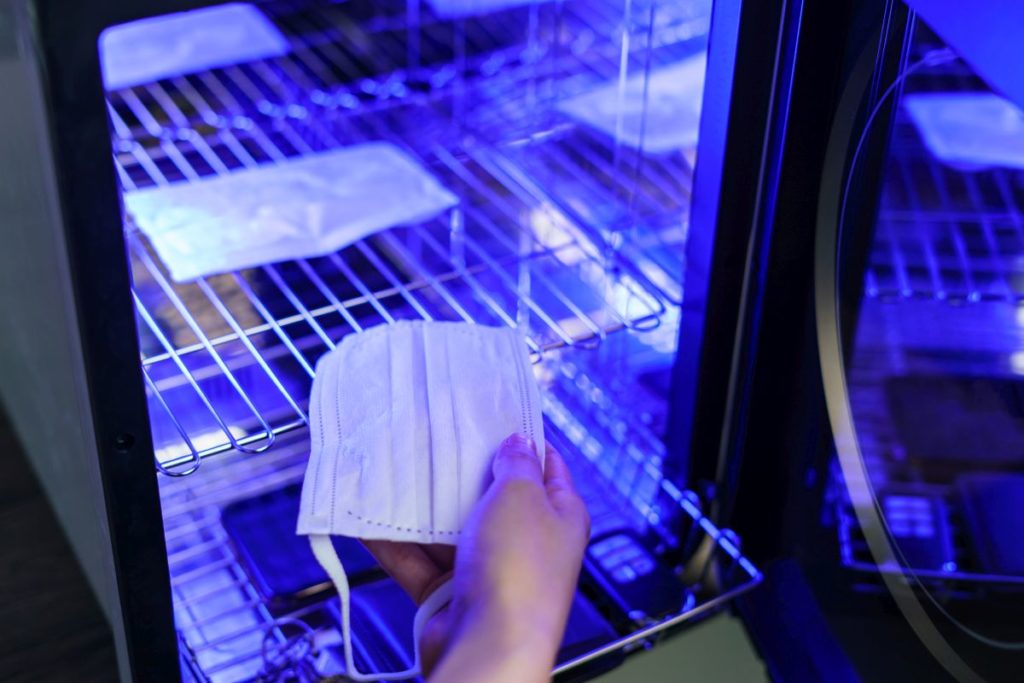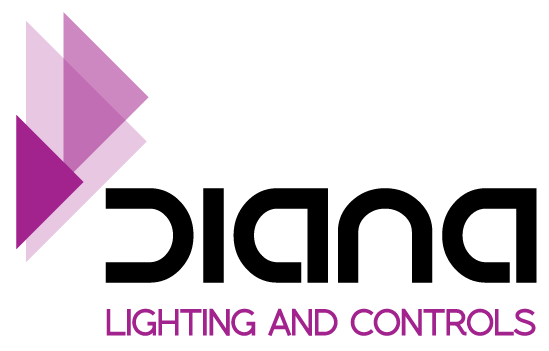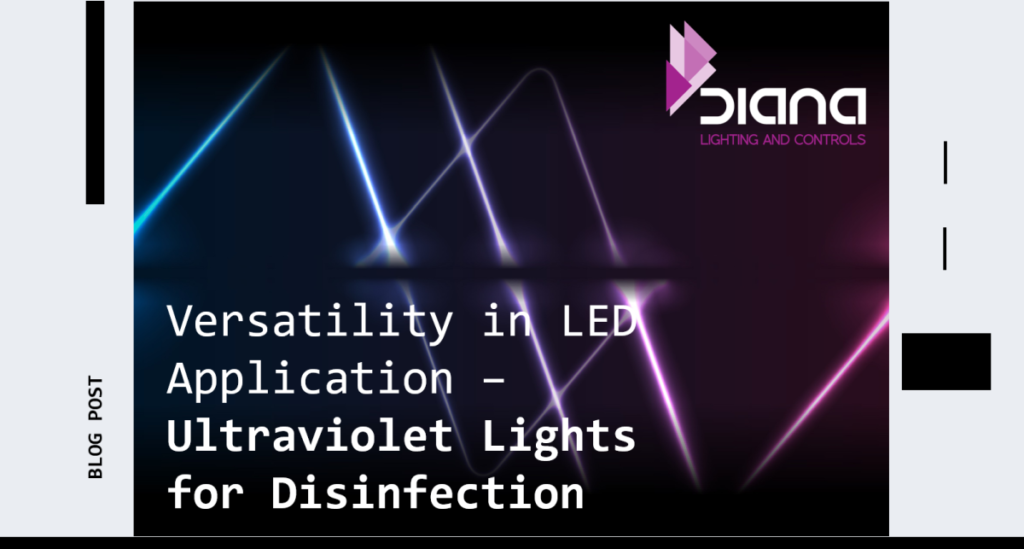Because LED lighting is our passion at Diana Lighting, we wanted to write an article on some of the less conventional uses of LED’s. A very important application of LEDs is Ultraviolet (UV) lights for disinfection. This refers to using UV radiation to inactivate / kill bacteria, viruses, fungi and spores.
For context, the UV radiation provided by our sun is partially absorbed by the layers of earth atmosphere and only a small portion of the UV radiation reaches the earth surface.
The UV radiation spectrum is between 100 nm (nanometers) and 400 nm wavelength and is divided in 3 ranges:
- UV-A in between 315 nm and 400 nm wavelength – also known as soft UV or black light, this is not absorbed by the ozone layer and reaches the earth surface
- UV-B in between 280 nm and 315 nm wavelength – partially / mostly absorbed by the ozone layer of our atmosphere and just a small portion reaches the earth surface
- UV-C in between 100 nm and 280 nm wavelength – this spectrum has the highest frequency and the smallest wavelength (100 nm to 280 nm) and is completely absorbed by the ozone layer; none of it reaches the earth surface
As far as disinfection is concerned, UV-C is the most effective UV spectrum. This spectrum is also known as “germicidal UV “or “Ionizing Radiation” and one of the most important applications of this type of radiation is the disinfection of air, water and nonporous surfaces.

How can UV radiation be generated?
The peak of the UV radiation that is most effective in the disinfection process is around 265 nm in wavelength which falls within the UV-C spectrum that is completely absorbed by the ozone layer. Because none of this radiation reaches the earth naturally, it needs to be generated artificially here on Earth instead. Before LEDs were developed as a light source, there were different types of lamps used to generate UV-C radiation. The lamps that can generate UV radiation with wavelengths around 265 nm are known as “germicidal lamps” and are used in disinfection which is also referred to as “ultraviolet germicidal irradiation” (UVGI). Historically, the downside of these lamps was their high energy consumption. Today, due to technological progress, these lamps are manufactured with LED technology which makes them significantly more efficient and environmentally friendly than their predecessors.
Why is all of this so important?
Since the level of disinfection efficiency is directly correlated to the dose of radiation applied, which in turn directly related with the intensity of the radiation and duration of exposure, LED technology has provided for a significantly more efficient and effective form of disinfection, thus making our lives safer, cleaner, more enjoyable and hopefully longer.
How can we help?
Since LED’s are our speciality, we are always happy to chat about this technology and its versatile application in day-to-day life. Give us a call at (647) 202-9126 or reach us at contact@dianalighting.com to learn more about how we can help you on your projects.

